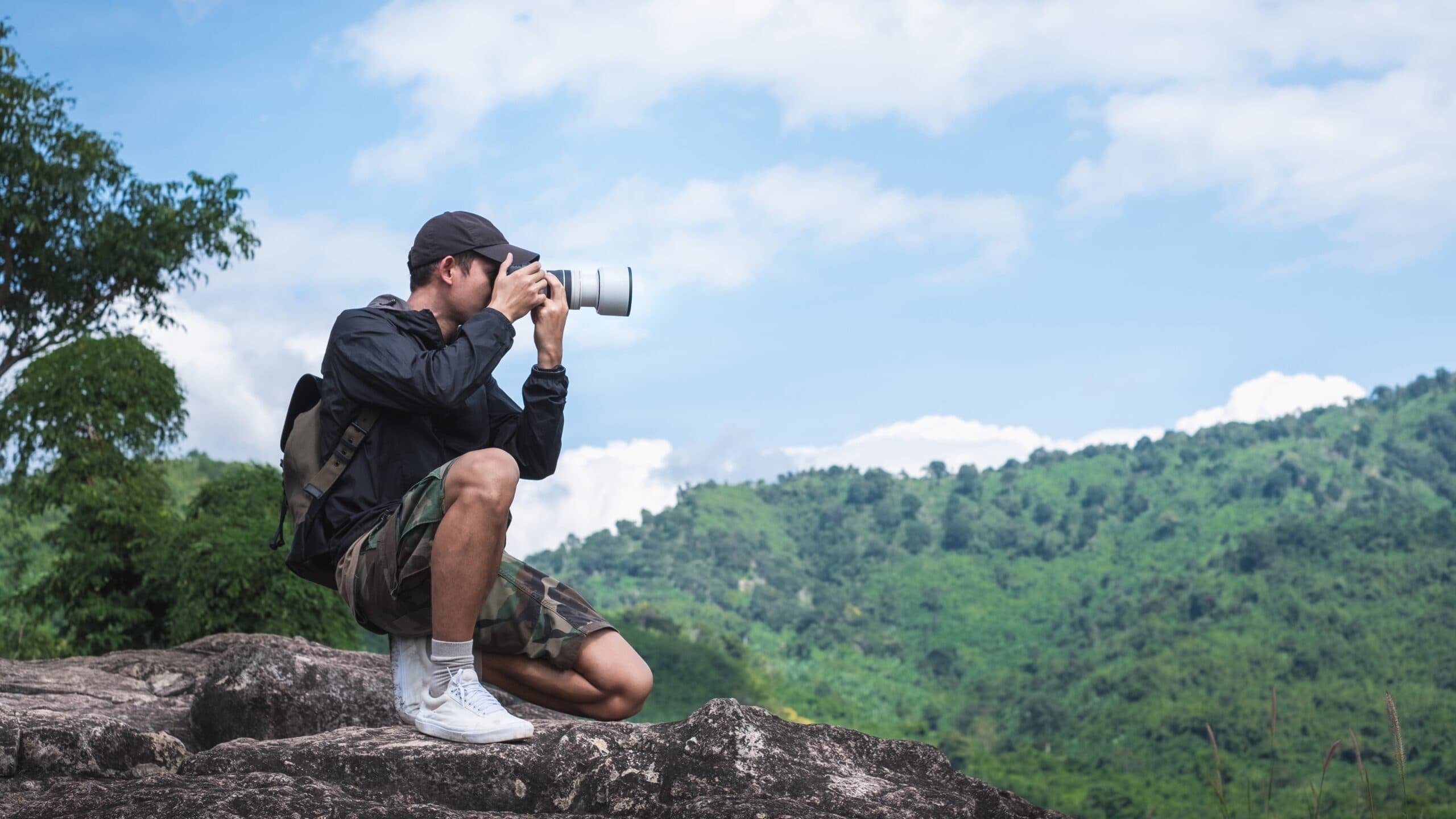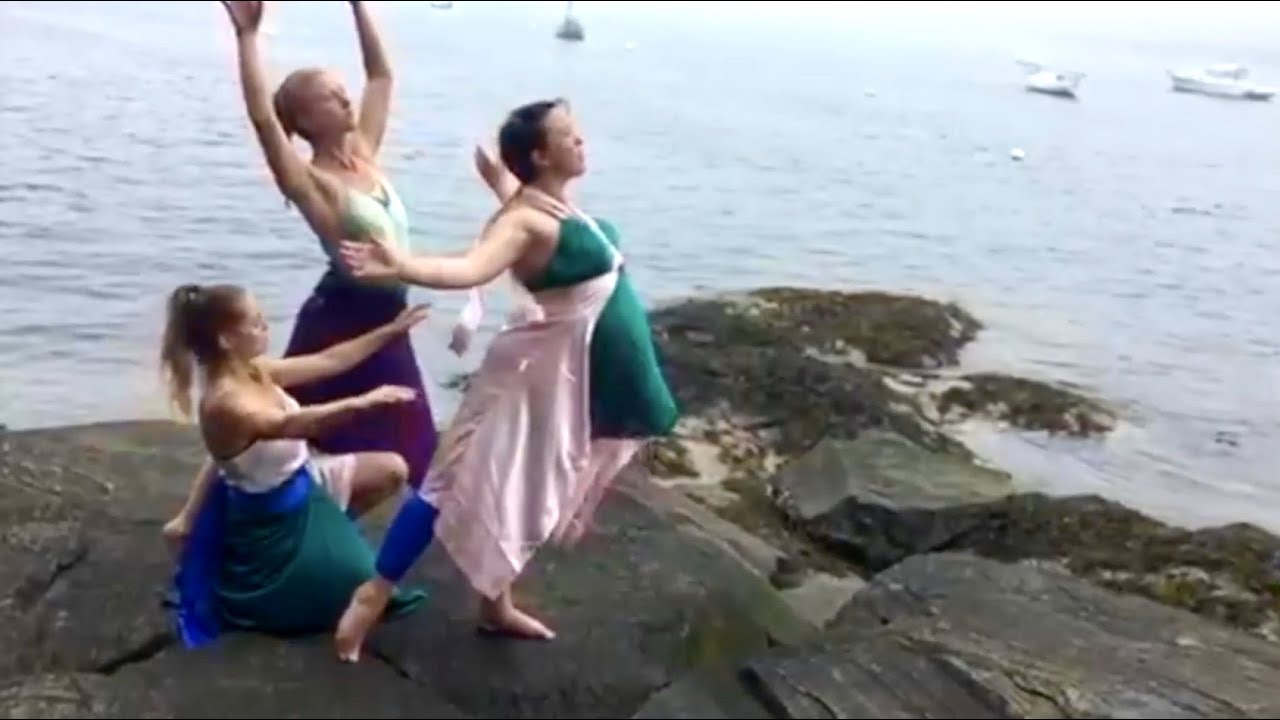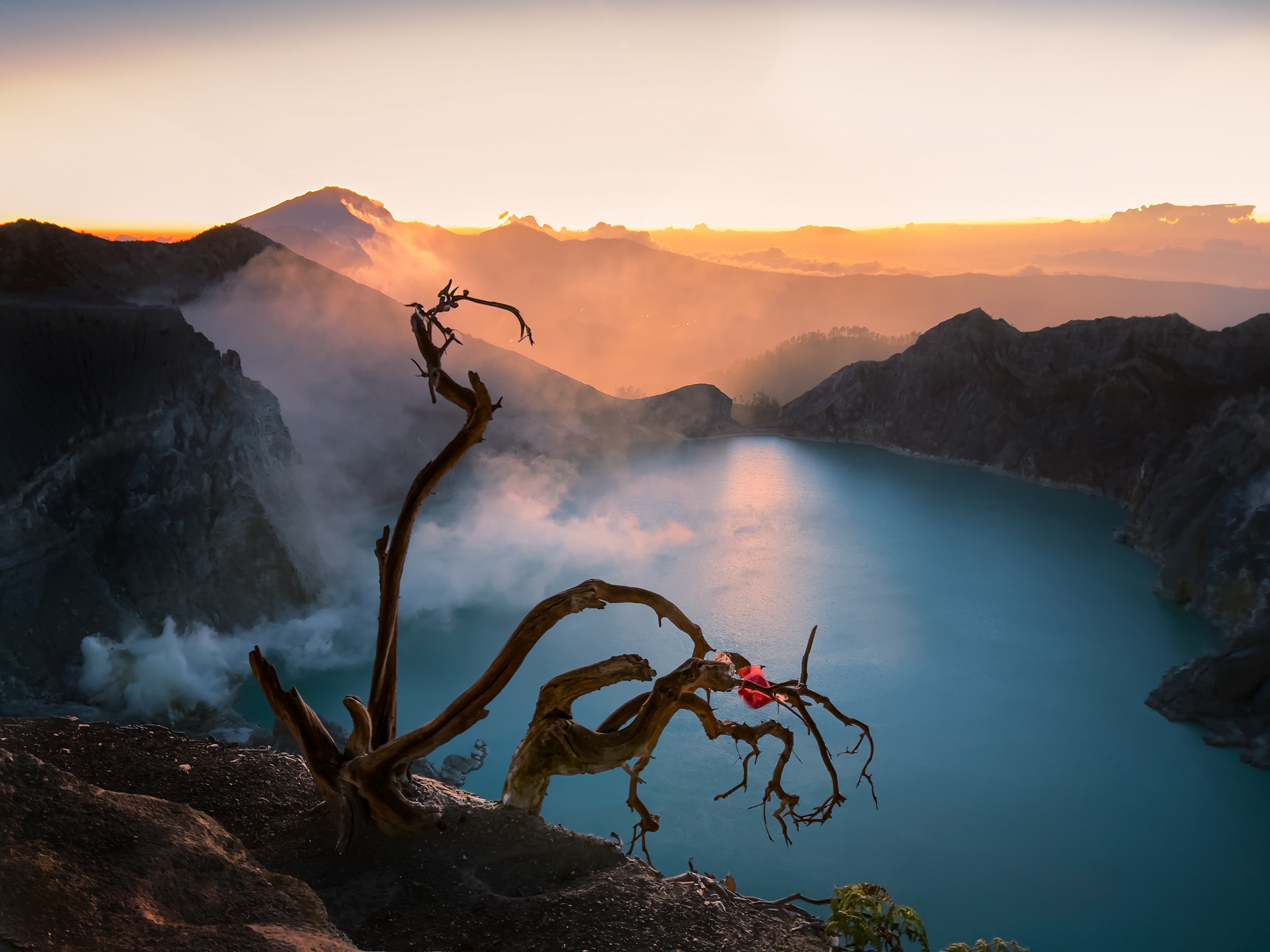Exploring Nature Photography as a Form of Creative Expression

The Artistry Behind Nature Photography
Nature photography goes beyond simple snapshots; it serves as a powerful form of creative expression that captures the heart and soul of our planet. Each photograph tells a story, revealing stories of landscapes, wildlife, and the delicate intricacies of the biosphere. When a photographer clicks the shutter, they invite the audience to embark on a visual journey that celebrates the allure and tranquility found in nature. Through these images, people can feel as though they are venturing into lush forests, meandering riverbanks, or sweeping mountain ranges, fostering a sense of connection to the natural world.
Key Elements of Nature Photography
- Composition: The art of composition is central to nature photography. By applying the principles of framing—such as the rule of thirds and leading lines—photographers can transform mundane scenery into mesmerizing visuals. For instance, a simple stream can be framed by overhanging branches to create depth, drawing the viewer’s eye into the image.
- Lighting: Mastering lighting is essential for achieving striking images. The golden hour, occurring shortly after sunrise and before sunset, casts a warm, soft light that can illuminate landscapes and create captivating shadows. For example, a field of wildflowers bathed in the amber light of dusk can appear otherworldly and vibrant, enticing the viewer to feel as if they are standing right amidst the flora.
- Emotion: A successful nature photograph evokes emotions. Photographers often aim to express feelings of peace, adventure, or wonder, compelling viewers to connect with and reflect upon the environment. An image capturing a lone deer in a misty meadow might elicit tranquility and introspection, highlighting the coexistence of wildlife and landscape.
There are various styles within nature photography, including macro photography, aerial views, and wildlife portraits. Each offers unique opportunities to unveil the richness of the natural world. Macro photography zeroes in on the minute details of insects or flowers, revealing textures and colors that often go unnoticed. Meanwhile, aerial views provide a panoramic perspective of vast landscapes, showcasing the beauty of the Earth from above, such as the splendor of an autumn forest seen from a drone. Wildlife portraits focus on the character and behavior of animals, crafting powerful narratives that educate viewers about their lives and habitats.
The Impact of Nature Photography
Amid the hustle and bustle of modern life, nature photography acts as a gentle reminder of the beauty that lies beyond our constructed environments. In an age dominated by technology and urbanization, these images challenge us to pause, engage our senses, and reflect on our surroundings. Through the lens of a camera, we gain new perspectives that often inspire personal exploration and environmental stewardship. Seeing the stunning colors of a sunset over the Grand Canyon or the serene stillness of a foggy morning in Central Park encourages individuals to appreciate and protect these irreplaceable natural wonders. As photographers delve into their craft, they not only enhance their skills but also cultivate a profound reverence for the planet that sustains us all.
In summary, the captivating realm of nature photography offers an exciting portal into exploring our environment. It invites everyone, from casual observers to seasoned photographers, to discover and celebrate the intricate artistry present in the natural world. As we turn our eyes towards the landscape, we open ourselves to a treasure trove of experiences that spark curiosity and foster a lasting connection to nature.
DIVE DEEPER: Click here to discover the power of music therapy

Understanding the Techniques That Elevate Nature Photography
To fully appreciate nature photography as a form of creative expression, it is crucial to delve into the techniques and practices that distinguish impactful images from mere docu-shots. The craft of capturing the essence of nature involves a keen eye, technical skills, and an understanding of the environment that are all paramount for a memorable photograph. These elements, when combined, help photographers communicate their vision and feelings about the natural world, allowing viewers to connect on a deeper level.
Essential Techniques in Nature Photography
- Depth of Field: Controlling depth of field is vital for emphasizing subjects within a photograph. Photographers can play with aperture settings to either bring foreground elements into sharp focus while softening the background, or vice versa, creating a distinctive storytelling element. For instance, capturing a solitary flower in sharp detail against a blurred landscape can evoke a sense of isolation while simultaneously showcasing the grandeur of the setting.
- Timing: Timing plays a significant role, particularly in wildlife and landscape photography. Being aware of animal behavior or natural phenomena, such as migrations or changing seasons, can yield exceptional photographs. Patience and persistence, such as waiting for the right moment when a bird takes flight or when the fog lifts to unveil a beautiful mountain view, can result in award-winning shots that resonate with viewers.
- Post-Processing: While the art of nature photography begins in the field, post-processing serves as an extension of a photographer’s creative expression. Using software like Adobe Lightroom or Photoshop, photographers can enhance colors, adjust exposure, and refine composition. This digital darkroom allows for personal interpretations of the natural scene, whether that means emphasizing the vivid hues of a sunset over the Pacific or creating a moody atmosphere in a fog-laden forest.
Moreover, understanding the ethical consideration of nature photography is essential. It involves a commitment to represent the environment truthfully without causing harm to the subjects or their habitats. Responsible photographers often engage in practices such as staying on established trails, avoiding disruptions to wildlife, and adhering to local regulations. This ethical approach not only preserves the integrity of the ecosystems being photographed but also fosters a sense of trust between the photographer and the audience.
Connecting with Nature Through Photography
The journey of exploring nature photography is also a deeply personal one. Photographers often find themselves immersed in settings that evoke inspiration and tranquility, making each outing a form of meditation. This personal connection can manifest in varying styles, from the colorful wildflower fields in California’s Antelope Valley to the rugged coastlines of Maine, each offering unique opportunities for creative expression. As photographers harness their passion for nature within their work, they often develop a profound connection to the landscapes they capture, fostering a greater appreciation for environmental conservation.
As we continue to explore nature photography as a form of creative expression, understanding these techniques and approaches can profoundly elevate both the artistic quality of images and the emotional resonance they carry. Each photograph, meticulously crafted with intention, invites viewers to experience the natural world through a unique lens, encouraging exploration and reflection.
Exploring the Depth of Nature Photography
Nature photography serves as an extraordinary medium for artistic creative expression, allowing photographers to unveil the intricate beauty of the natural world. Beyond merely capturing scenic landscapes, this art form provides a profound connection to the environment and fosters a deeper environmental consciousness. Various techniques, such as long exposure and macro photography, enable artists to express their unique visions and emotions, framing nature in ways that challenge conventional perspectives.
In addition, the experience of photographing nature pushes artists to venture outdoors, explore diverse ecosystems, and engage with their surroundings more intimately. By doing so, photographers often find themselves immersed in an inspiring journey that evokes creativity and mindfulness. The nuances of light, texture, and color stimulate artistic growth, transforming an ordinary moment into an extraordinary visual story.
| Advantage | Description |
|---|---|
| Emotional Connection | Nature photography cultivates a heightened emotional rapport between the artist and their subjects. |
| Enhanced Creativity | Photographing various elements of nature stimulates new ideas and translates emotions into visual art. |
Furthermore, sharing these captured moments through exhibitions or social media platforms not only showcases artistic vision but also spreads awareness about environmental preservation. By illustrating the delicate balance of ecosystems, nature photographers encourage viewers to appreciate and protect the planet. As enthusiasts delve into this ever-evolving craft, they discover limitless opportunities for artistic growth and advocacy, urging everyone to embark on their own journey of exploration.
DIVE DEEPER: Click here to discover more
The Role of Subject Matter in Nature Photography
The subject matter of nature photography plays a significant role in shaping the narrative and emotional depth of each image. Different elements of the natural world, from sweeping landscapes to intricate close-ups of flora and fauna, offer distinct opportunities for creative expression. Each photographed element tells a unique story, allowing photographers to choose how they wish to communicate their vision through their lens.
Landscapes: Capturing the Grandiosity of Nature
Landscape photography stands as one of the most popular genres in nature photography, inviting photographers into magnificent vistas that stretch as far as the eye can see. The versatility in landscapes—ranging from grand mountain ranges to serene beaches—provides photographers with endless avenues for creativity. Utilizing techniques such as leading lines, where paths, rivers, or fences draw the viewer’s eye into the scene, can enhance the visual impact. For instance, capturing the rugged cliffs of the Pacific Northwest at sunset, with the interplay of light and shadow, can evoke feelings of awe and adventure.
Moreover, seasonal changes and dynamic weather conditions can significantly alter the appearance of landscapes, presenting photographers with varying moods and settings. The ethereal quality of a sunrise shrouded in fog can create a sense of mystery, while the vibrant colors of fall foliage can resonate with warmth and nostalgia. Engaging with these varying terrains allows photographers to explore their creative perspectives while encouraging viewers to appreciate the dramatic beauty of the natural world.
Macro Photography: Unveiling the Details
While sweeping landscapes capture the grand scale of nature, macro photography allows for an intimate exploration of minute details in the environment. By using specialized lenses and techniques, photographers can reveal the intricate beauty of small subjects such as dew-covered spider webs, intricate flower petals, or busy insects. This genre emphasizes the often-overlooked aspects of nature, drawing attention to the complexity and artistry present in even the simplest of subjects.
Macro photography also invites an exploration into the concept of texture and patterns found in the natural world, which can lead to striking compositions. For example, a close-up shot of a dragonfly’s wing can invite viewers to admire the mosaic-like characteristics that might often go unnoticed, encouraging a deeper appreciation for biodiversity. Such images foster a greater connection between human observers and the intricate systems of life surrounding them, highlighting the importance of conservation.
Wildlife Photography: The Dance of Life
Wildlife photography, arguably one of the most challenging facets of nature photography, presents a dynamic canvas for creative expression. Capturing animals in their natural habitat not only requires technical skill and patience but also a deep understanding of animal behavior. From the graceful movements of a deer in the forest to the powerful predatory instincts of a lion in the savannah, wildlife photography emphasizes the beauty and drama of life in the wild.
This genre also serves as a powerful tool for raising awareness about environmental issues and wildlife conservation. Photographers such as Joel Sartore, known for his National Geographic projects, leverage their work to emphasize the plight of endangered species. By depicting creatures in their habitats, photographers can engage audiences and spark discussions about the importance of biodiversity and the urgent need to protect our natural world.
In summation, the interplay of subject matter in nature photography provides a rich tapestry for creative expression. Whether capturing expansive landscapes, intricate details, or dynamic wildlife, each choice reflects the photographer’s unique vision and intention. The ability to translate experiences in nature into visual stories engages viewers while inviting them to appreciate the beauty and fragility of the environment around us. This continuous exploration and practice enable photographers not only to refine their craft but also to invest in their personal journeys of connection with nature.
DIVE DEEPER: Click here to uncover the intersection of art and technology
Conclusion: The Transformative Power of Nature Photography
In conclusion, nature photography emerges not merely as a form of artistic endeavor but as a profound medium for creative expression that resonates deeply with both the photographer and the audience. Each genre—from breathtaking landscapes that convey the vastness of our planet to intimate macro shots that reveal hidden wonders—serves as a reminder of the beauty and complexity of the natural world. Photographers harness their skills and perspectives, navigating the interplay between light, texture, and form to create compelling narratives that captivate viewers.
The impact of wildlife photography extends beyond mere aesthetics; it serves as a vital conduit for awareness about conservation and the urgency of protecting our planet’s biodiversity. Through their lenses, photographers encourage viewers to forge a connection with nature, sparking curiosity and fostering a collective responsibility to nurture and preserve the environment. This art form, therefore, plays a crucial role in urging society toward greater ecological mindfulness.
Moreover, engaging with nature photography enables personal reflection and growth. Photographers embark on a journey of exploration, learning not only about their subjects but also about the delicate balance within ecosystems. As they capture moments in time, they invite others to revel in the wonders of nature, challenging them to appreciate the world around them.
Ultimately, exploring nature photography as a form of creative expression transcends simple image creation; it connects us to the world and each other, making it a vital artistic endeavor that demands our attention and respect. By celebrating the immense beauty, diversity, and fragility of our environment, nature photography encourages both artists and viewers alike to protect the planet for generations to come.


